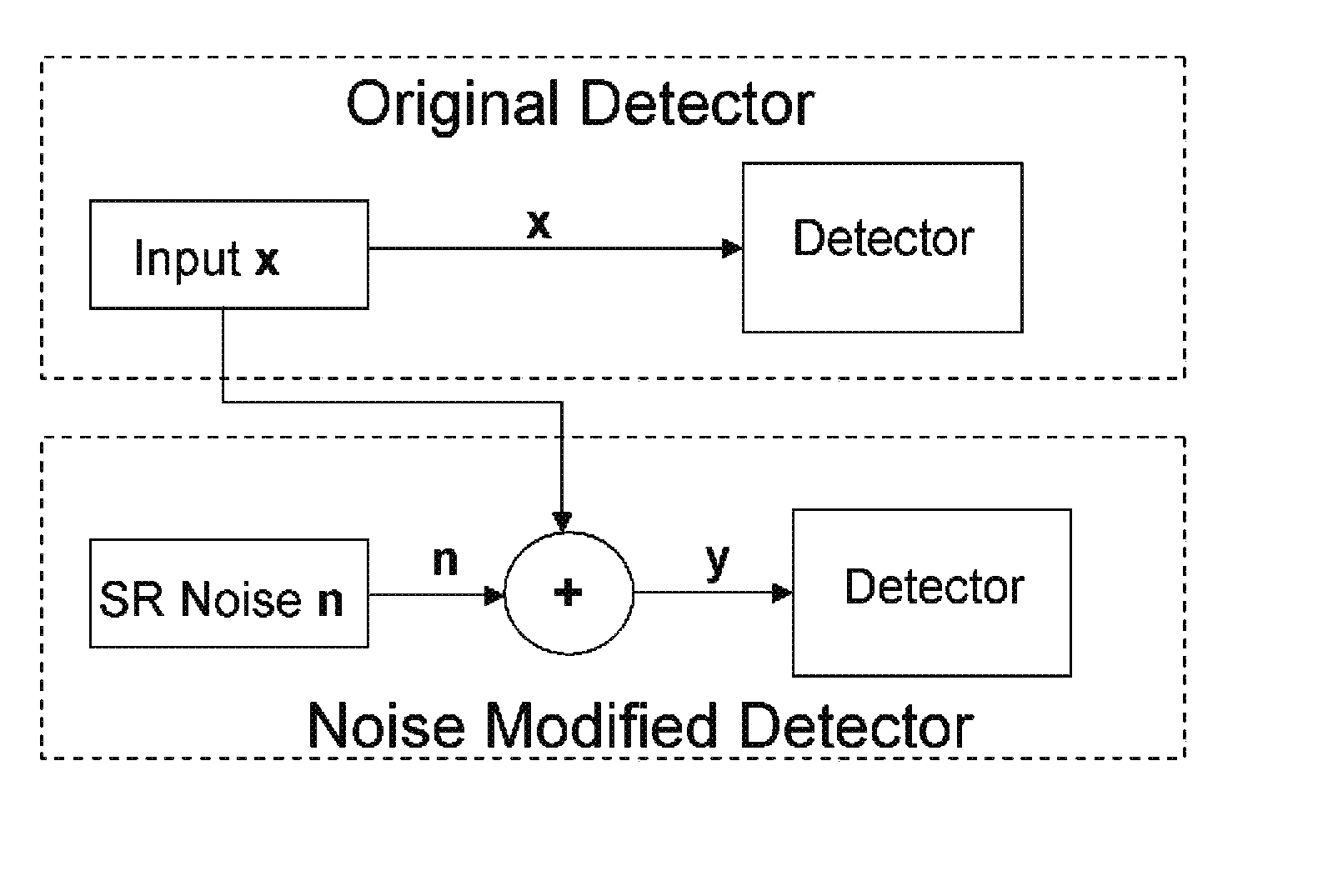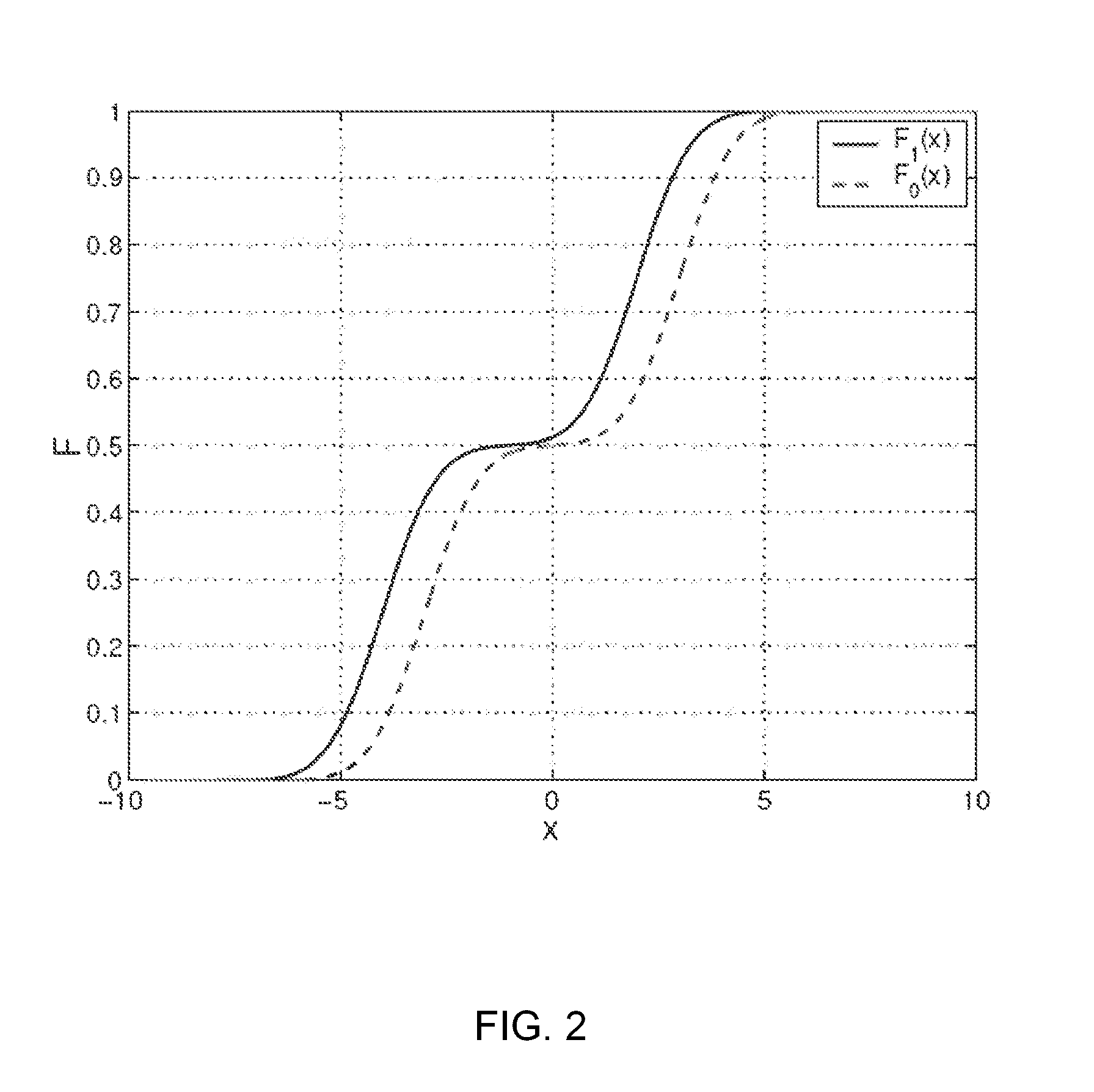Optimized Stochastic Resonance Method for Signal Detection and Image Processing
a stochastic resonance and image processing technology, applied in the field of signal detection, can solve the problems of uniform definition of snr, optimization of output snr does not guarantee optimization of detection probability, and the snr gain-based sr approach has several limitations, so as to improve detection, optimize detection, and optimize the effect of detection
- Summary
- Abstract
- Description
- Claims
- Application Information
AI Technical Summary
Benefits of technology
Problems solved by technology
Method used
Image
Examples
detection example
[0069] In a detection problem where two hypotheses H0 and H1 are given as {H0x[i]=ω[i]H1x[i]=A+ω[i],(38)
for i=0, 1, . . . , N−1, A>0 is a known dc signal, and w[i] are i.i.d noise samples with a symmetric Gaussian mixture noise pdf as follows pw(w)=12γ(w;-μ,σ02)+12γ(w;μ,σ02)and whereγ(w;μ,σ02)=12πσ2exp[-(w-μ)22σ2](39)
setting μ=3, A=1 and σ0=1. A suboptimal detector is considered with test statistic T(x)=1N∑i=0N-1(12+12sgn(x[i])=1N∑i=0N-1(ϖx[i])whereϖx[i]=12+12sgn(x[i]).(40)
[0070] From equation (40), this detector is essentially a fusion of the decision results of N i.i.d. sign detectors.
[0071] When N=1, the detection problem reduces to a problem with the test statistic T1(x)=x, thresholds η=0 (sign detector) and the probability of false alarm PFAx=0.5. The distribution of x under the H0 and H1 hypotheses can be expressed as p0(x)=12γ(x;-μ,σ02)+12γ(x;μ,σ02)and(41)p1(x)=12γ(x;-μ+A,σ02)+12γ(x;μ+A,σ02)(42)
respectively. The criti...
PUM
 Login to View More
Login to View More Abstract
Description
Claims
Application Information
 Login to View More
Login to View More - R&D
- Intellectual Property
- Life Sciences
- Materials
- Tech Scout
- Unparalleled Data Quality
- Higher Quality Content
- 60% Fewer Hallucinations
Browse by: Latest US Patents, China's latest patents, Technical Efficacy Thesaurus, Application Domain, Technology Topic, Popular Technical Reports.
© 2025 PatSnap. All rights reserved.Legal|Privacy policy|Modern Slavery Act Transparency Statement|Sitemap|About US| Contact US: help@patsnap.com



